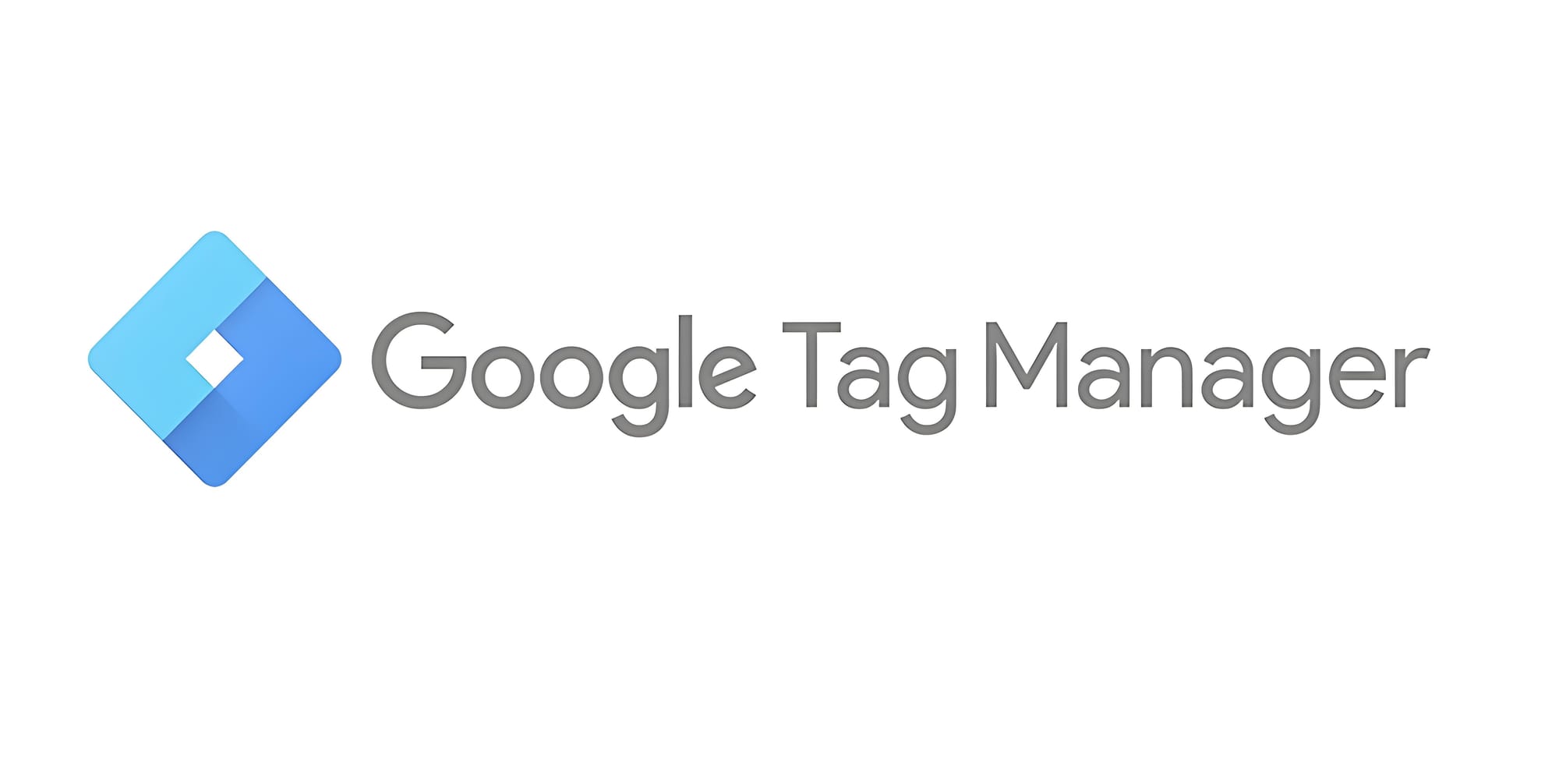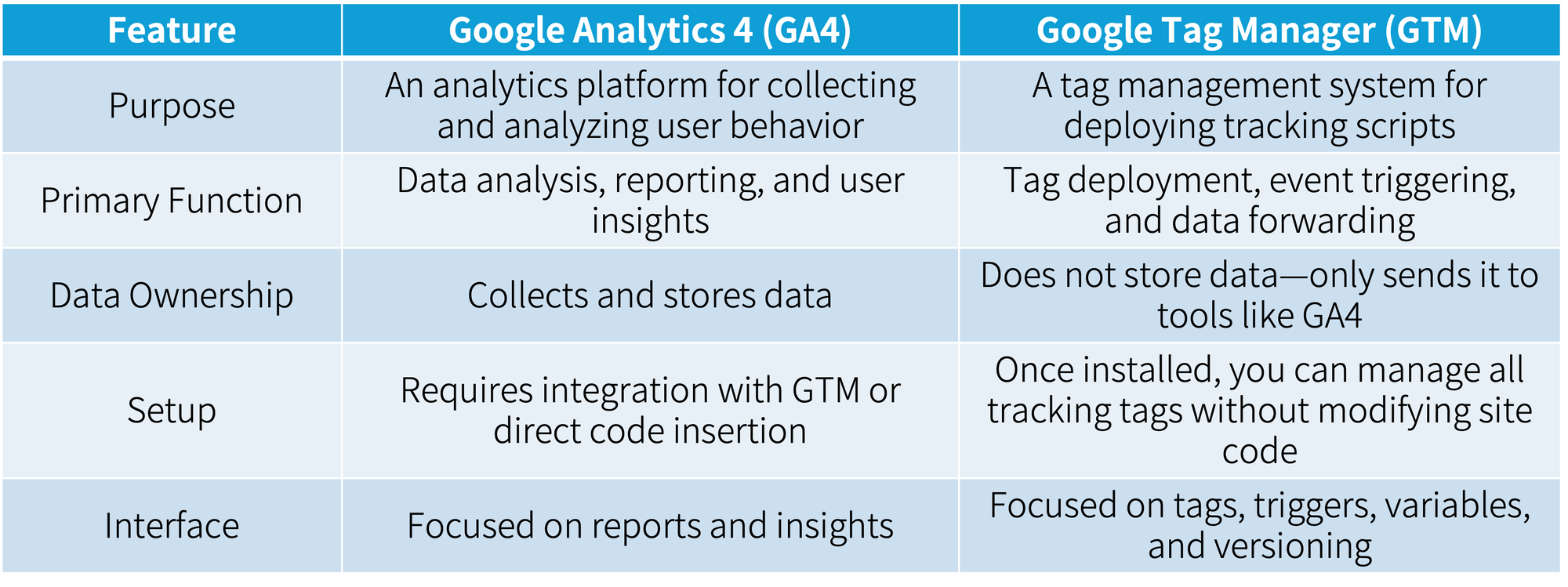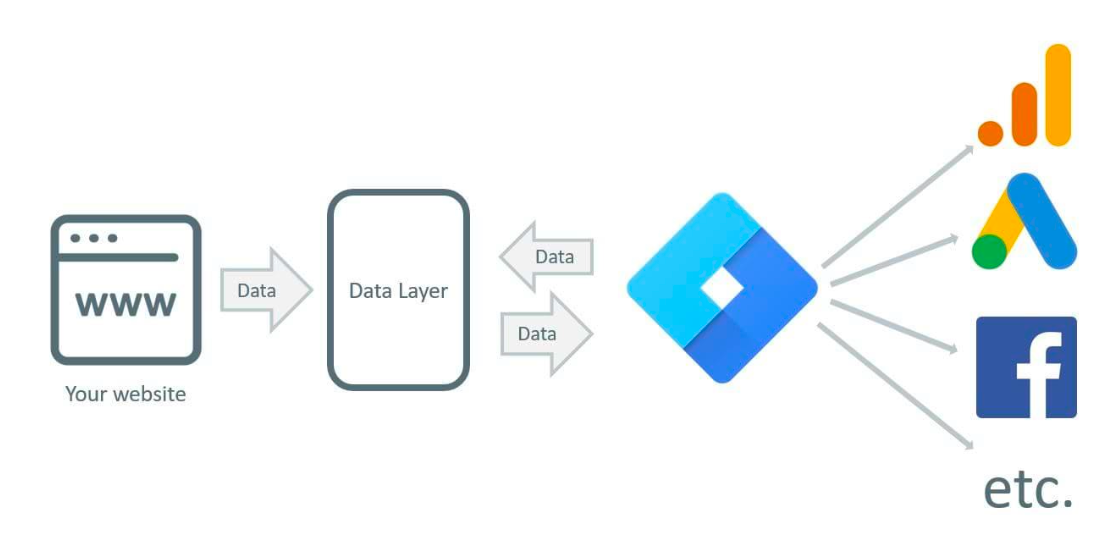Google Analytics VS Google Tag Manager: What's Difference and When to Use Each
In the vast ecosystem of digital marketing tools, Google provides a powerful suite often referred to as the “Google Toolbox” for marketers, analysts, and developers. Two of the most popular components in this toolbox are Google Analytics 4 (GA4) and Google Tag Manager (GTM). Though often mentioned in the same breath, these tools serve fundamentally different purposes. Understanding how they work individually—and together—can elevate your ability to track, analyze, and act on user behavior data.
Meet the Google Toolbox: GA4 and GTM
Think of Google Tag Manager as a delivery van, and Google Analytics 4 as the warehouse that stores and organizes your products. GTM delivers data to GA4 and other destinations, but it doesn’t analyze or visualize anything on its own. In contrast, GA4 is the analytics engine—it receives data (often through GTM), processes it, and displays insights through reports and dashboards.
So, they’re not rivals or alternatives. They’re partners.
1. Google Analytics 4 (GA4)

What is GA4:
Google Analytics 4 (GA4) is the latest generation of Google's website and app analytics platform. It serves as a robust tool for collecting and analyzing both paid and organic traffic data across websites and mobile applications. GA4 enables businesses to gain in-depth insights into user behavior and understand how users interact with their products. Unlike the traditional session-based model used in Universal Analytics, GA4 adopts an event-driven data model, making it more suitable for cross-platform (Web + App) analysis.
Key Use Cases:
Event Tracking: GA4 is centered around events, allowing businesses to track and analyze a wide range of user interactions across websites and apps. This includes actions such as button clicks, video plays, and purchases, making it ideal for marketing funnel analysis.
Cross-Platform Measurement: GA4 supports tracking user behavior across multiple devices and platforms, enabling a more holistic and accurate view of the customer journey.
Major Improvements:
Flexible event model: No rigid Category/Action/Label structure; supports custom event names/parameters.
Enhanced Measurement: Auto-tracks interactions like scrolls, outbound clicks, and file downloads.
Key Events (formerly "Conversions"): Mark any critical event (e.g., purchases, sign-ups) as a key event.
DebugView: Real-time debugging tool to validate event tracking.
2. Google Tag Manager (GTM)

What is GTM:
Google Tag Manager (GTM) is a tag management system—essentially a “code container”—that allows you to manage and deploy various types of tracking tags on your website or app without having to modify the source code directly. GTM supports a wide range of tags, including GA4 tags, advertising tracking tags, and conversion tracking tags, enabling streamlined implementation and centralized control of all tracking needs.
Key Use Cases:
Simplified Code Management: Quickly add or update tracking codes without disrupting website performance or requiring development resources.
Flexible Configuration: Define custom trigger conditions based on page content, user behavior, or device type, allowing for precise and dynamic tag firing.
Key Components:
Tags: Snippets of code to be executed (e.g., GA4 tracking code).
Triggers: Conditions determining when a tag fires (e.g., "On Page Load" or "On Button Click").
Variables: Dynamic data storage (e.g., clicked URLs, user IDs).
Key Benefits:
Rapid deployment of marketing/analytics codes, reducing reliance on developers.
Centralized management of all tracking scripts.
Built-in Preview & Debug Mode for testing.
Supports auto-event tracking (e.g., form submissions, link clicks).
3. GA4 vs GTM: Key Differences
GTM is an essential companion tool to GA4, enabling seamless installation of GA4 tags on websites or applications, along with flexible configuration of tracking rules.

In short, GA4 is where data lives, and GTM is how the data gets there. You can use both. GTM is the mechanism that sends interaction data (events) to GA4. GA4 then stores and analyzes that data for reporting and insights.

Here are some typical use cases:
Use GA4 to define what matters to your business (e.g., tracking form submissions, purchases, or video views).
Use GTM to implement the logic that sends those interactions to GA4.
In most modern setups, GA4 and GTM work hand-in-hand. For instance, if you want to track how many people click a "Sign Up" button, GTM helps you detect and send that event, while GA4 shows you how often it happens and what impact it has on customer journeys.
4. A Smarter Way to Do Event Tracking: Meet JTracking
In today's data-driven world, businesses rely heavily on accurate analytics to make informed decisions. Google Tag Manager (GTM) is one of the most popular tools for tracking user behavior on websites. However, setting up effective event tracking for these platforms can be time-consuming, error-prone, and complex. This is where JTracking, an AI-powered event tracking solution, steps in to simplify the process.
What is JTracking?
JTracking is an innovative tool that leverages artificial intelligence to generate expert event tracking plans for Google Analytics (GA). It not only creates these plans but also enables deployment to Google Tag Manager (GTM) with just one click. The power of AI comes into play by automatically identifying the most relevant events to track, creating a structured plan, and deploying it seamlessly—all without manual intervention.
For businesses using GA and GTM, this solution is a game-changer. It eliminates the need for complex coding and reduces the risk of human error, making it easier to collect accurate data that can be used for actionable insights.
5. Final Thoughts
Google Analytics 4 and Google Tag Manager are not mutually exclusive tools—they are a dynamic duo in the digital marketing world. Use GTM to streamline how you deploy tracking, and rely on GA4 to make sense of the data you collect. And if you want to scale your tracking efforts intelligently, consider adding a tool like JTracking to the mix.
Understanding how these tools work—individually and together—will set you up for smarter, faster, and more scalable analytics.
Would you like this formatted for your blog or posted to your JTracking website? I can also help make it more SEO-optimized if needed.
